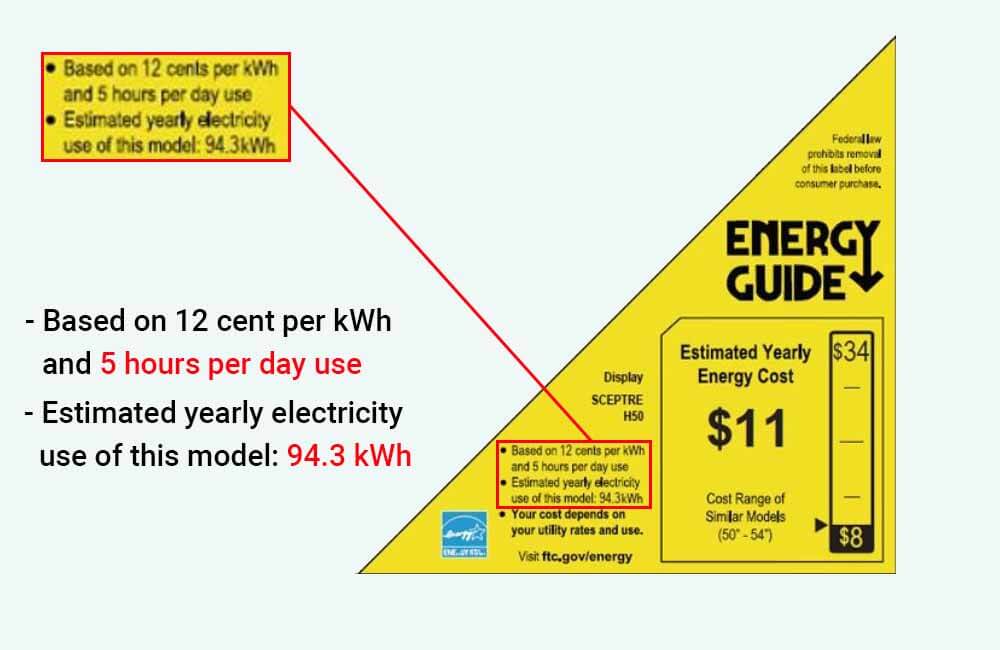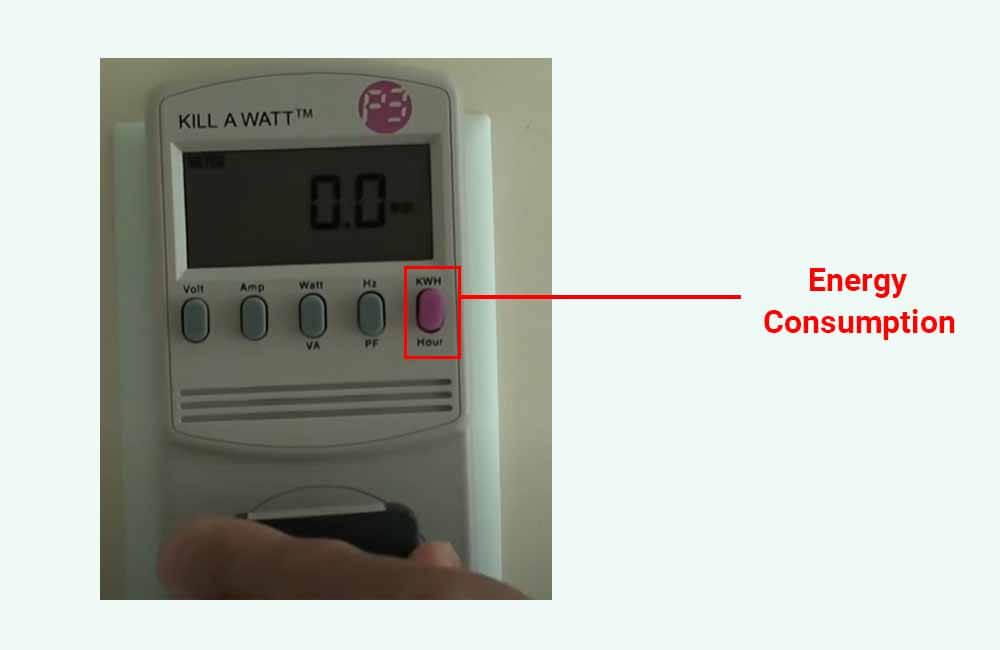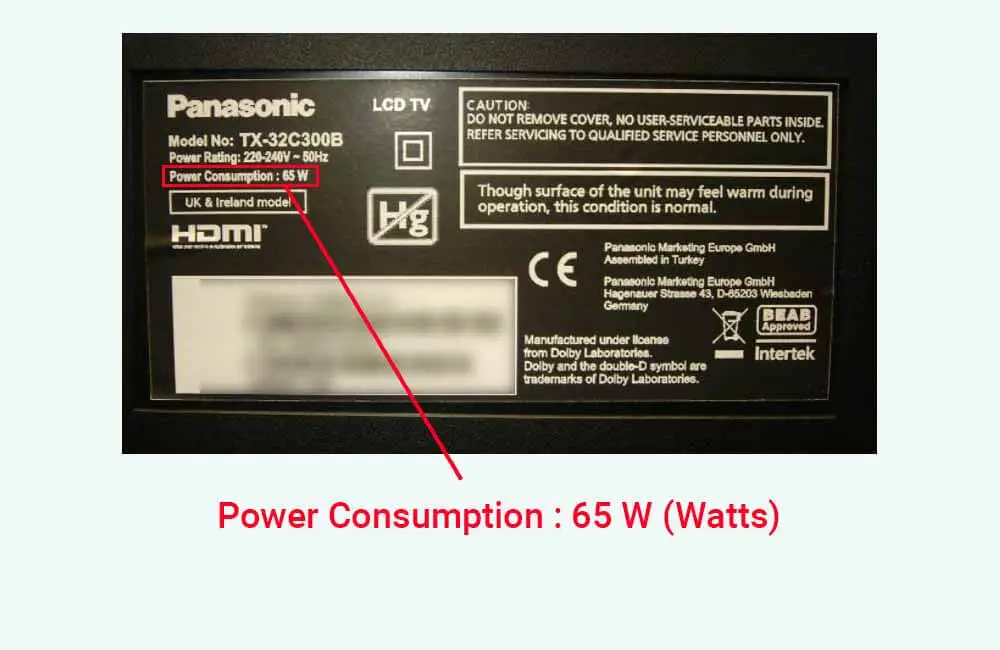How Long Can a Lcd Tv Run Continuously
Compared to other appliances such as refrigerators and air conditioners, TVs don't use a lot of electricity and can run for hours on a single 12V-100Ah battery. However, there are a couple of factors that determine exactly how long that is.
In this article, I will discuss these factors, and I will show you how to determine them and how to use them to calculate the amount of TV time that you could get out of a single 100ah battery.
How long will a 100ah battery run a tv?
In general, a 12V-100Ah battery can run a 32-inch LED TV for 24 to 30 hours before it is completely depleted. The same 100ah battery would only run a 50 inch LED TV for 15 to 20 hours before it is fully discharged.
However, please note that unless it's a lithium battery, it should not be fully discharged. More on that below.
Before I explain how to accurately calculate how long a 100Ah can run your TV, to provide some perspective, the following table estimates the number of hours for which different TV sizes and types could run on a single 12V-100Ah battery before it's completely depleted:
| TV size | TV Type | Average Power Usage in Watts (W) | Run Time on a single 100Ah battery (hours) |
| 18in | LCD | 25-32 W | 32-40 hours |
| LED | 18-22 W | 45-56 hours | |
| CRT | 60-75 W | 14-18 hours | |
| 24in | LCD | 36-44 W | 24-28 hours |
| LED | 24-28 W | 36-42 hours | |
| CRT | 75-95 W | 10-14 hours | |
| 32in | LCD | 50-60 W | 16-20 hours |
| LED | 35-40 W | 25-30 hours | |
| OLED | 45-50 W | 20-24 hours | |
| Plasma | 100-130 W | 8-10 hours | |
| 40in | LCD | 60-70 W | 15-17 hours |
| LED | 40-50 W | 20-25 hours | |
| OLED | 55-65 W | 16-18 hours | |
| Plasma | 120-160 W | 6-9 hours | |
| 50in | LCD | 75-90 W | 12-14 hours |
| LED | 50-60 W | 17-20 hours | |
| OLED | 70-80 W | 12-15 hours | |
| Plasma | 150-200 W | 5-7 hours | |
| 60in | LCD | 90-110 W | 10-12 hours |
| LED | 60-75 W | 14-17 hours | |
| OLED | 90-100 W | 10-12 hours | |
| Plasma | 200-250 W | 4-5 hours |
Please note that the figures in the table are just estimates. To accurately determine how long a 100ah battery will be able to run your TV, you'll need 2 pieces of information:
- The amount of energy that your TV consumes in Watt-hours per hour (Wh/hour)
- The usable capacity of the battery in Watt-hours (Wh)
Once these two variables are determined, you could then calculate the length of time (in hours) through this formula:
TV Run Time (hours) = (Battery's Usable Capacity (Wh) ÷ TV's Hourly Energy Consumption (Wh/hour)) x 0.85
FYI: the 0.85 coefficient represents the efficiency of the inverter. (average inverter efficiency is 85%)
Example:
Consider a TV that uses 50Wh of energy per hour (50Wh/hour), which we want to run on a 12V-100AH lithium (LiFePO4) battery that has a usable capacity of 1200Wh (Watt-hours).
Using our formula, we can calculate the length of TV time that the battery can provide:
TV Run Time (hours) = (Battery's Usable Capacity (Wh) ÷ TV's Hourly Energy Consumption (Wh/hour)) x 0.85
TV Run Time (hours) = (1200Wh ÷ 50Wh/hour) x 0.85
TV Run Time (hours) = (24) x 0.85
TV Run Time (hours) = 20.4 hours
According to these calculations, the lithium battery can run the TV for 20 to 21 hours.
If you don't yet know how much energy your TV consumes, or how much usable capacity your battery has, the following sections explain how to determine these 2 variables.
How much energy does your TV use?
The amount of energy that a TV uses depends on things like:
- TV size
- Display technology
- Age of the model
Nevertheless, in my article about the power usage and the energy consumption of TVs, I explain 3 easy methods that you can use to determine the energy consumption of your TV:
1- Use the wattage rating in the specifications label:
Stuck to the back of your TV, you'll probably find a specifications label that provides technical information about your TV. Once you locate the label, look for the power usage (wattage) rating, which is specified in "watts" or simply "W".
Once you find this power rating, you can easily use it to calculate the energy consumption of your TV in watt-hours:
TV's Energy Consumption (Watt-hours) = Power Usage (Watts) x Usage Time (hours)
For example, if the manufacturer of your TV specifies 60W (watts) as the power usage of your TV, the hourly energy consumption of your TV is:
TV's Energy Consumption (Watt-hours) = Power Usage (Watts) x Usage Time (hours)
TV's Energy Consumption (Watt-hours) = 60 Watts x 1 hour
TV's Energy Consumption (Watt-hours) = 60 Watt-hours (Wh)
If you can't locate the specifications label, or it simply doesn't specify a power usage, you can go with the 2nd method.
2- Use the EnergyGuide label provided by the manufacturer:
Almost all appliances come with an EnergyGuide (yellow & black) label that estimates their annual energy consumption and how much it would cost to run the appliance.
In the case of TVs, the EnergyGuide label provides this annual energy consumption in kWh (kiloWatt-hours) based on the assumption that the TV would run for 5 hours a day.
Based on these pieces of information, we can easily estimate the amount of energy that the TV consumes each hour:
Hourly Energy Consumption (Wh/hour) = Annual Energy consumption (Wh/year) ÷ (Daily Run Time (hours) x 365)
Hourly Energy Consumption (Wh/hour) = Annual Energy consumption (Wh/year) ÷ (5 hours x 365)
Hourly Energy Consumption (Wh/hour) = Annual Energy consumption (Wh/year) ÷ (1825 hours)
For example, the following EnergyGuide label is from a 50″ LED TV:

In this particular example, the manufacturer estimates that if the TV runs for 5 hours a day, it'll consume 94.3 kWh of energy annually. Since 1 kWh equals 1000 Wh, 94.3 kWh/year equates to 94300 Wh/year.
Using our formula, we can calculate the hourly energy consumption of the TV:
Hourly Energy Consumption (Wh/hour) = Annual Energy consumption (Wh/year) ÷ (1825 hours)
Hourly Energy Consumption (Wh/hour) = 94300 Wh ÷ (1825 hours)
Hourly Energy Consumption (Wh/hour) = 51.67 Watt-hours per hour
If you can't find the EnergyGuide label that came with your TV, the last option is to use an electricity monitoring device.
3- Use an electricity monitoring device:
This is the most accurate way to determine the energy consumption of your TV. With devices such as the Kill-A-Watt meter, you can accurately measure the energy usage of your TV over a certain period of time (1 hour for example).
All you have to do is plug the device into the electrical outlet, and plug your TV into it.

Once you set everything up, push the purple button that says "kWh", and wait for exactly one hour. The device will display the energy consumption of your TV in kWh (kiloWatt-hours) over that hour. Then, simply multiply that kWh value by 1000 to get the energy consumption in Wh (Watt-hours)
For more details about these methods, please refer to this page: How many watts does a TV use?
Once you've determined the amount of energy that your TV consumes each hour, the next step is to determine the usable capacity of the battery you'll be using.
How much is the usable capacity of the battery?
The rated capacity of a battery can be easily determined by multiplying its voltage rating (ex: 12V) by its Amp-hours rating (ex: 100Ah). This would give us the rated capacity of the battery in Watt-hours (Wh):
Rated Capacity (Wh) = Voltage Rating (V) x Amp-hours Rating (Ah)
In this particular case, the battery in question is rated at 100ah. Assuming its voltage rating is 12V, the rated capacity of the battery is:
Rated Capacity (Wh) = 12V x 100Ah
Rated Capacity (Wh) = 1200 Watt-hours
However, what matters most in a deep-cycle battery is not its rated capacity, but how much of that capacity can be repeatedly used without hurting the battery. This amount of capacity is referred to as Usable Capacity.
Usable Capacity (Wh) = Rated Capacity (Wh) x Recommended Depth Of Discharge (%)
If a battery has a recommended depth of discharge (DOD) of 50%, it means that its usable capacity equals half of its rated capacity. If a battery has a recommended DOD of 100%, its usable capacity is equal to its rated capacity.
And generally, the recommended depth of discharge of a battery depends on the type of the battery.
Let me explain.
As a rule of thumb, deep-cycle batteries can be divided into 2 types:
Lead-Acid batteries:
These batteries are generally cheap and more available. However, in order for a lead-acid battery to last 3 years or more (@ a charge/discharge cycle per day), it cannot be discharged to less than 50% of its rated capacity.
For example, consider a 12V-100aAH AGM lead-acid battery. The rated capacity of this battery is 1200Wh (12V x 100AH), however, since the recommended depth of discharge (DOD) of lead-acid batteries is 50%, we can only use 600Wh (Watt-hours) from the battery before it has to be recharged or disconnected.
Usable Capacity (Wh) = Rated Capacity (Wh) x Recommended Depth Of Discharge (%)
Usable Capacity (Wh) = 1200 Wh x 50%
Usable Capacity (Wh) = 1200 Wh x 0.5
Usable Capacity (Wh) = 600 Wh
In other words, if you're planning on using a 12V-100AH lead-acid battery to run your TV, the battery can only supply 600 Watt-hours of energy before it has to be recharged.
Lithium batteries:
These batteries are generally more expensive but are much more efficient. A lithium battery can be completely discharged (100% DOD) and still last a thousand charge/discharge cycles.
However, the recommended depth of discharge for these batteries is 80%.
For example, consider a 12V-100AH Lithium-Iron-Phosphate (LiFePO4) battery.
This particular battery can supply up to 1200 Wh of energy each cycle without sustaining permanent damage. At an 80% DOD, this battery will supply 960 Wh of energy each cycle, and will last much longer (approx. 10 years @ a charge/discharge cycle per day).
Usable Capacity (Wh) = Rated Capacity (Wh) x Recommended Depth Of Discharge (%)
Usable Capacity (Wh) = 1200 Wh x 80%
Usable Capacity (Wh) = 1200 Wh x 0.8
Usable Capacity (Wh) = 960 Wh
Both of these battery chemistries are viable Off-grid solutions, but make sure you know what type of battery you'll be using and the Depth Of Discharge that the manufacturer recommends.
As shown above, the type of battery you'll be using will have a great influence on the amount of TV time that it can provide.
In any case, once you've determined the energy consumption of your TV, and the usable capacity of your battery, the last step is to use the formula that I previously provided:
TV Run Time (hours) = (Battery's Usable Capacity (Wh) ÷ TV's Hourly Energy Consumption (Wh/hour)) x 0.85
To make this even clearer, the following section provides a detailed example.
Example:
For this example, I'll be using a 32″ LCD TV that I'll be running on a 12V-100AH AGM (Lead-Acid) battery.
as explained before, the first thing to determine is the energy consumption of the TV.
TV's Energy Consumption:
To determine the hourly energy consumption of this TV, our first option is to look for the technical specifications sticker, which in this particular case, is provided:

The manufacturer specifies 65 Watts as the power usage of this TV. Its hourly energy consumption is:
TV's Energy Consumption (Watt-hours) = 65 Watts x 1 hour
TV's Energy Consumption (Watt-hours) = 65 Watt-hours (Wh)
Next, is the usable capacity of our battery
Battery's Usable Capacity:
Our battery is rated at 12 Volts and 100 Amp-hours. Its rated capacity in Watt-hours is 1200Wh:
Rated Capacity (Wh) = Voltage Rating (V) x Amp-hours Rating (Ah)
Rated Capacity (Wh) = 12V x 100Ah
Rated Capacity (Wh) = 1200Wh
Now, the battery is Lead-Acid, which in general, means that its recommended depth of discharge is 50%. At a 50% DOD, the usable capacity of the battery is 600Wh:
Usable Capacity (Wh) = Rated Capacity (Wh) x Recommended Depth Of Discharge (%)
Usable Capacity (Wh) = 1200Wh x 50%
Usable Capacity (Wh) = 600Wh
The last step is to use our formula:
TV Run Time (hours) = (Battery's Usable Capacity (Wh) ÷ TV's Hourly Energy Consumption (Wh/hour)) x 0.85
TV Run Time (hours) = (600 Wh ÷ 65 Wh/hour) x 0.85
TV Run Time (hours) = 9.23 x 0.85
TV Run Time (hours) = 7.84 hours
According to these calculations, our 65W LCD TV can run on our 12V-100Ah AGM battery for around 8 hours before the battery needs to be recharged.
An important thing to note, however, is that while most TVs use AC (Alternating Current) power, batteries provide DC (Direct Current) power.
This means that the TV will not be directly connected to the battery, but will be connected to it via an Inverter.
The next section explains how to determine the size of the inverter that you need to run your TV on battery power.
What size inverter do I need to run a TV?
The main specification to look for in an inverter (in this case) is its Continuous Power rating (in watts). This rating indicates how much power an inverter can deliver continuously to your appliances.
As a rule of thumb, to determine the size of the inverter that can run your TV, simply multiply the power usage (watts) of your TV by a factor of 1.5, and make sure the inverter you choose has a Continuous Power rating higher than the result.
Inverter Watts (W) > TV Watts (W) x 1.5
For example, if your TV uses 80 watts of power, the inverter you choose should be rated at more than 120 watts (80 watts x 1.5).
To read more about this topic, please refer to this page: What size inverter do you need to run a TV?
Spread knowledge... It's FREE!!
Source: https://www.renewablewise.com/how-long-will-a-100ah-battery-run-a-tv/
0 Response to "How Long Can a Lcd Tv Run Continuously"
Post a Comment